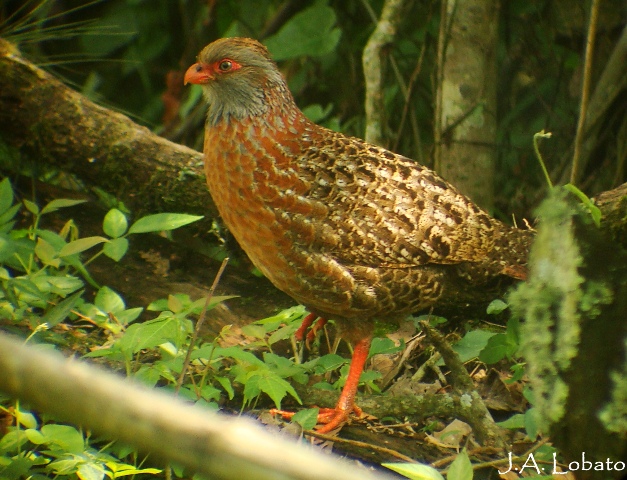
Dendrortyx barbatus
TAXONOMY
Dendrortyx barbatus Gould, 1846, Jalapa, Veracruz, Mexico.
Monotypic.
OTHER COMMON NAMES
English: Bearded partridge, Bearded tree-quail; French: Colin
barbu; German: Bartwachtel; Spanish: Colin barbudo, Chivizcoyo.
PHYSICAL CHARACTERISTICS
This is one of the larger species ranging 9–13 in (22–32 cm) in
length and estimated weights of males about 16 oz (459 g) and
for females about 14 oz (405 g). This bird has a grayish head
with a small crest. Most notable are the bright red eye-ring,
bill, and legs. The body has an overall reddish brown coloration
with a darker rump and wings.
DISTRIBUTION
Restricted
DISTRIBUTION
to 14 fragmented populations ranging
from west-central Veracruz to extreme northeast Queretaro,
Mexico.
HABITAT
It is found in montane pine-oak, cloud, and older second
growth forests. It is also associated with forest edges, shade
coffee, and some agricultural land. Most of the forest, especially
in Veracruz, Mexico is highly fragmented. The recently
discovered population in Queretaro inhabits the most remote
and intact forests.
BEHAVIOR
Little is known. They form coveys like most of the other quails
and have quite raucous chorus calls in the morning.
FEEDING ECOLOGY AND DIET
Little information available, but is known to feed on a variety
of seeds and fruits. Will eat domestic crops such as black beans.
Captive birds readily eat beans, corn, bananas, and grapes.
REPRODUCTIVE BIOLOGY
Little is known, but the breeding season is suspected to be
April–June. Broods of five have been seen in the wild. Captive
birds constructed nests in shallow depressions in the ground
and lined them with palms.
CONSERVATION STATUS
Until 1995 this species was considered Critically Endangered.
Surveys undertaken in late 1990s resulted in discovery of additional
populations in remnant forests. Now downgraded to
Vulnerable. However, rapid human growth and encroaching
agriculture further threaten this species.
SIGNIFICANCE TO HUMANS
Because of its limited
DISTRIBUTION
and population, it is not an
important species to humans. However, even in the remaining
populations birds are still hunted for sport, and trapped as cage
birds and for food. Local farmers have poisoned them when
they are found depredating black bean fields.
Other popular Animals
Photo Gallery of - Bearded wood-partridge
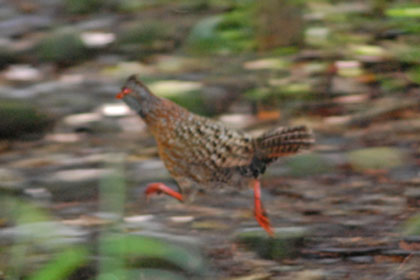
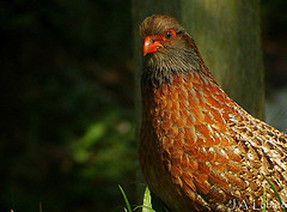
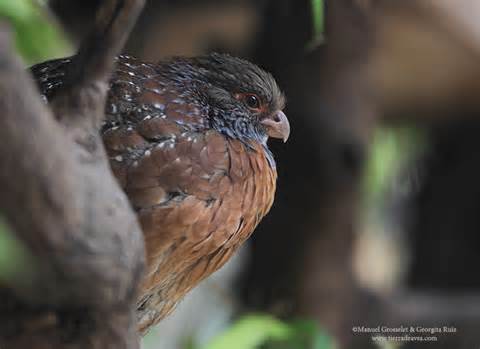
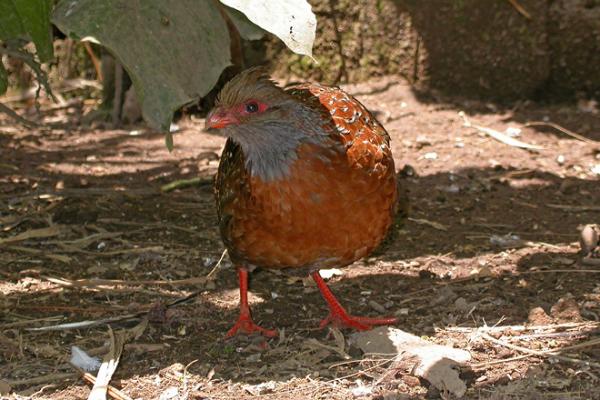
 Animalia Life
Animalia Life